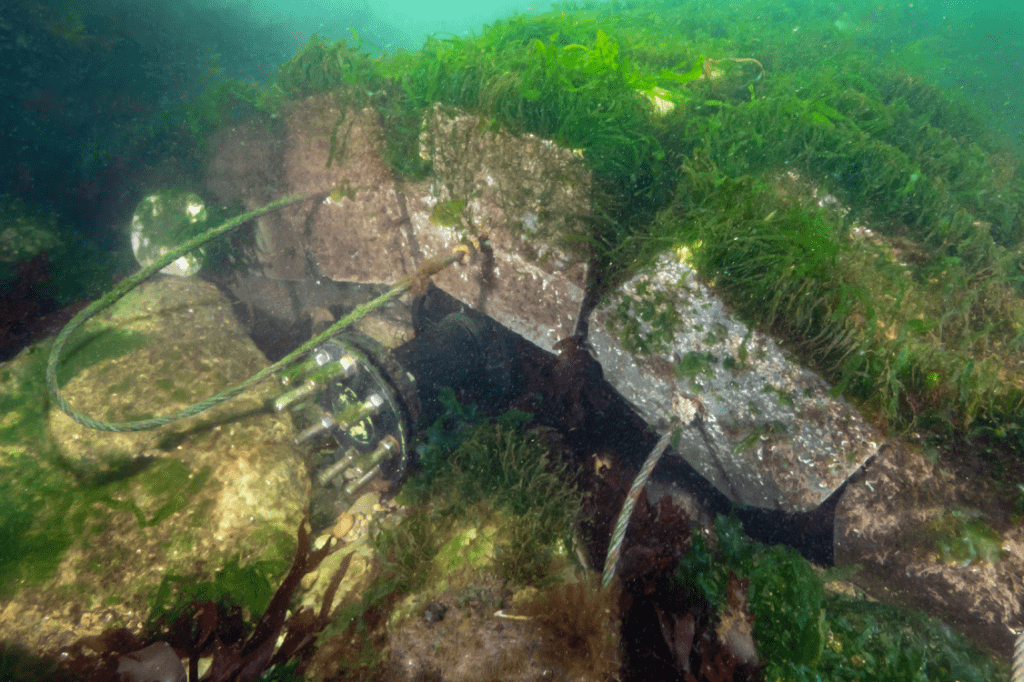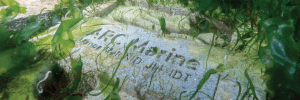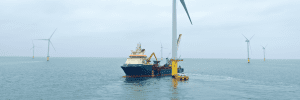Across our seas and coastlines, there is growing recognition that the way we design marine infrastructure must change. For decades, construction in the ocean has focused almost entirely on function and protection, often overlooking the ecosystems that surround it. Now, with marine habitats under pressure and coastal development on the rise, there is a clear need for solutions that safeguard both people and the environment.
Nature-Inclusive Design (NID) is one of the most promising approaches shaping that shift. It brings ecology and engineering together, creating structures that deliver their required performance while also supporting marine life. At ARC marine, this has been central to our mission from the start.
Our work in this field has informed the development of the new British Standard, PAS 1401:2025 Nature-Inclusive Marine Structures – Code of Practice.
The PAS was sponsored by ARC marine, facilitated by BSI Standards Limited, and published under licence from the British Standards Institution. It came into effect on 28 February 2025.
The standard was technically authored by ARC marine’s Chief Science Officer, Samuel Hickling, and shaped through collaboration with a steering group of organisations across government, academia and industry, including Natural England, the Environment Agency, RWE, bp, WSP, Bournemouth University and the Blue Marine Foundation.
PAS 1401 sets out the practical framework for designing marine structures that work with nature, not against it.
What Nature-Inclusive Design Means
Nature-Inclusive Design is an approach that considers ecological outcomes from the very beginning of a project. Rather than treating the ocean environment as a blank or empty space, NID recognises that marine landscapes are living systems. Every structure interacts with the organisms and processes around it.
NID encourages designers and engineers to make informed choices about materials, form and surface texture that allow life to settle, grow and thrive. It does not reduce engineering performance or compromise safety. Instead, it looks for opportunities to create ecological value while delivering the intended purpose of the structure.
From offshore wind foundations to breakwaters, harbour walls and cable protection systems, NID can be introduced across a wide spectrum of marine infrastructure.
PAS 1401: A Pathway for Implementation
Before PAS 1401, there was no structured guidance for how to deliver Nature-Inclusive Design in the marine environment. The PAS provides:
• clear design principles
• a step-by-step design and evaluation process
• recommendations for ecological monitoring and long-term performance review
• a shared language that can be used by engineers, developers, regulators and scientists
This standard makes Nature-Inclusive Design practical, repeatable and measurable. It allows marine infrastructure projects to set ecological objectives at the start and track whether they are achieved over time.

Reef mat: A Practical Example of Nature-Inclusive Design
One of the clearest demonstrations of NID in practice is the Reef mat.
Traditionally, subsea mattresses used for scour protection or to stabilise cables and pipelines are made from standard concrete and synthetic rope. They perform their engineering role, but they offer little to no ecological benefit once installed.
Reef mat achieves the same structural purpose, but with a very different outcome. It is made using Marine Crete, a 98% recycled, entirely plastic-free and low-carbon cement. A green alternative designed for use in marine environments. The surface features a range of textures that encourage colonisation by native organisms, creating complex microhabitats across the seabed.
By combining reliable subsea protection with ecological function, Reef mat demonstrates how NID can reshape a whole category of marine infrastructure.

From Lab to Field
In ARC Labs, we study settlement patterns, material science and biological responses to understand how marine communities form on artificial structures. These insights feed directly back into product design and project planning.
Post-installation monitoring is an essential part of our work. Across several deployments, Reef cubes® have shown more than a threefold increase in native species abundance compared to nearby reference surfaces. Each project adds to a growing evidence base, allowing our designs to improve continuously.
No single intervention can rebuild marine ecosystems. For that reason, we develop a range of modular tools that can be tailored to site conditions, ecological targets and engineering requirements. PAS 1401 helps guide this process, ensuring that solutions remain grounded in science and measurable outcomes.
Looking Forward
Nature-Inclusive Design represents a shift in how we think about marine construction. Instead of separating infrastructure from nature, it encourages us to recognise their connection. Over time, this approach has the potential to reshape how we plan ports, coastal defence schemes, offshore energy developments and restoration projects.
At ARC marine, we are committed to advancing this work in partnership with researchers, developers, supply chains and local communities. We believe that the future of marine infrastructure will be defined not only by what it protects, but by what it helps to restore.
Learn More
Explore Nature-Inclusive Design consultancy →
Download PAS 1401 →
Nature-inclusive design in restoration
Wild Oyster Project →
Nature-inclusive design in offshore scour protection
RESP Scour Protection →



